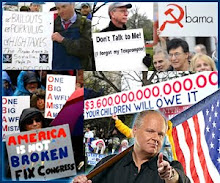If cap and trade passes, businesses could soon face “The Scarlet Letter” treatment. Businesses may have to include a carbon label on their products that tells consumers how much carbon dioxide used in the production process. Cap and trade would raise production costs for businesses—forcing them to include a carbon label on their products is salt in the wound.
Section 274 of the Waxman-Markey cap-and-trade bill calls for an Environmental Protection Agency study “to determine the feasibility of establishing a national program for measuring, reporting, publicly disclosing, and labeling products or materials sold in the United States for their carbon content.” The purpose of the study would be to determine “whether a national product carbon disclosure program and labeling program would be effective in achieving the intended goals of achieving greenhouse gas reductions.”
That’s right. Next to your nutrition label, you could see a carbon footprint telling you how much carbon dioxide businesses emitted to make that product. Sounds harmless. Silly, but harmless. But it may be more harmful than imagined—think of the additional costs this would place on businesses.
This could particularly hit small businesses the hardest and put those businesses at a competitive disadvantage with larger firms within the United States who can absorb the costs more easily. We can look to the food nutritional label and a study by the Fuqua School of Business at Duke University as an example. The Nutrition Labeling and Education Act (NLEA) went into effect in 1994 and was the beginning of the nutritional facts label. The intent was to provide consumers with the information to make healthier choices and provide producers the incentive to make healthier products. These are certainly commendable goals but according to one study, “considering the relatively small magnitude of diet quality improvements from label use, it appears possible that even when consumers read labels, they do not always understand them.”
And these labels do not come without cost. The Food and Drug Administration estimated that the NLEA would cost industry $1.4 billion to $2.3 billion over a 20-year period. These increased costs led to an increased market share for large food distributors.
Christine Moorman, an author of the study said, “We expected that label information would allow firms to compete more honestly for consumers’ purchases, but instead we find an unintended loss of small firms in food categories.”
A carbon label would likely do the same but instead it affects every industry. Will consumers feel guilty about buying a product with a carbon footprint on it? Will producers feel guilty enough to produce more carbon-friendly products?
The real question is: Does it make sense to increase the costs of products like orange juice when Al Gore lives in a 20-room, eight-bathroom carbon-spitting mansion? (According to a BusinessWeek article, “The average household in America consumes 10,656 kilowatt-hours (kWh) per year, according to the Department of Energy. In 2006, Gore devoured nearly 221,000 kWh—more than 20 times the national average.”)
Bottom line—a carbon labeling program is more government micromanagement that spells higher prices for consumers.
http://blog.heritage.org/2009/09/17/today%E2%80%99s-calamity-do-we-want-a-carbon-footprint-label-on-everything-we-buy/
Subscribe to:
Post Comments (Atom)

No comments:
Post a Comment